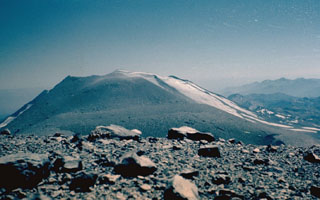Report on Nevados de Chillan (Chile) — 22 March-28 March 2017
Smithsonian Institution / US Geological Survey
Weekly Volcanic Activity Report, 22 March-28 March 2017
Managing Editor: Sally Sennert.
Please cite this report as:
Global Volcanism Program, 2017. Report on Nevados de Chillan (Chile) (Sennert, S, ed.). Weekly Volcanic Activity Report, 22 March-28 March 2017. Smithsonian Institution and US Geological Survey.
Nevados de Chillan
Chile
36.868°S, 71.378°W; summit elev. 3180 m
All times are local (unless otherwise noted)
On 24 March OVDAS-SERNAGEOMIN reported that during an overflight of Nevados de Chillán scientists observed a single 100-m-diameter crater, the result of two active craters merging together sometime between 7 and 15 March. In addition there were five explosions in the period of about an hour, ejecting tephra 900 m high which dispersed SE. The pattern of activity changed on 17 March with increased frequency and magnitude of the explosions. The Alert Level remained at Yellow, the middle level on a three-color scale, and the public was reminded not to approach the craters within a 3-km radius.
Geological Summary. The compound volcano of Nevados de Chillán is one of the most active of the Central Andes. Three late-Pleistocene to Holocene stratovolcanoes were constructed along a NNW-SSE line within three nested Pleistocene calderas, which produced ignimbrite sheets extending more than 100 km into the Central Depression of Chile. The dominantly andesitic Cerro Blanco (Volcán Nevado) stratovolcano is located at the NW end of the massif. Volcán Viejo (Volcán Chillán), which was the main active vent during the 17th-19th centuries, occupies the SE end. The Volcán Nuevo lava-dome complex formed during 1906-1945 on the NW flank of Viejo. The Volcán Arrau dome complex was then constructed on the SE side of Volcán Nuevo between 1973 and 1986, and eventually exceeded its height. Smaller domes or cones are present in the 5-km valley between the two major edifices.
Source: Servicio Nacional de Geología y Minería (SERNAGEOMIN)

